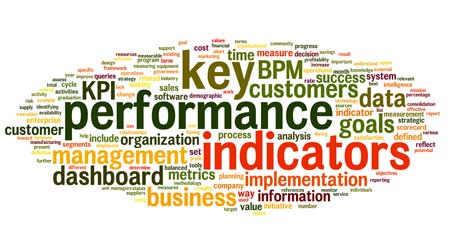After Finding the Right KPIs, Take Advantage of the Information
One excellent example came in a conversation with a manager who needed to illustrate annual energy use and performance against a 2005 baseline. In developing a KPI, he landed on total energy use as a metric, as seen in Chart 1 (below).
All the data was there, including the baseline year and each year's subsequent performance. But the information was difficult to process. It was fairly clear the facility was improving, but it was difficult to assess how much. Facility executives have a goal to reduce energy use from a set baseline over several years. Data needs to be reported annually in terms of kiloBtu per square foot, and there is a required end-goal reduction by a particular year. The manager needed a graphic that connected with the organization and the executive staff's needs. The picture he needed was Chart 2 (below).
This picture allowed the manager to show use and progress toward a defined goal in a way that aligned with the organization's needs and that he can use to request support for implementing energy-conservation measures that will assist in decreasing energy consumption as required to meet the goal.
In determining KPIs to report, managers need to start with understanding the stakeholders are the issues they care about. Connecting metrics to the organizational mission grounds managers' work in meaning and relevance, and it keeps them from wasting time chasing data that ultimately does not serve a purpose.
After developing the right KPIs, spend some time thinking about the most effective way to package the information. Use the data to tell the story. This is one of our best opportunities to showcase the value of departments' work and gain support for programs.
Laurie Gilmer is the vice president of facility services at Facility Engineering Associates (FEA). She leads FEA's facility asset management, building energy management, and sustainability services. Laurie is a published author, and co-authored the
second manual in the International Facility Management Association (IFMA) sustainability How-To Guide series, EPA's Energy Star Portfolio Manager. Laurie is a member of ASHRAE and IFMA and is chair of IFMA's Sustainability Facility Credential scheme committee.
Agree? Disagree? Have something to say?
We want to hear from you. Visit myfacilitiesnet.com/LaurieGilmer, and start a conversation.

Related Topics:















